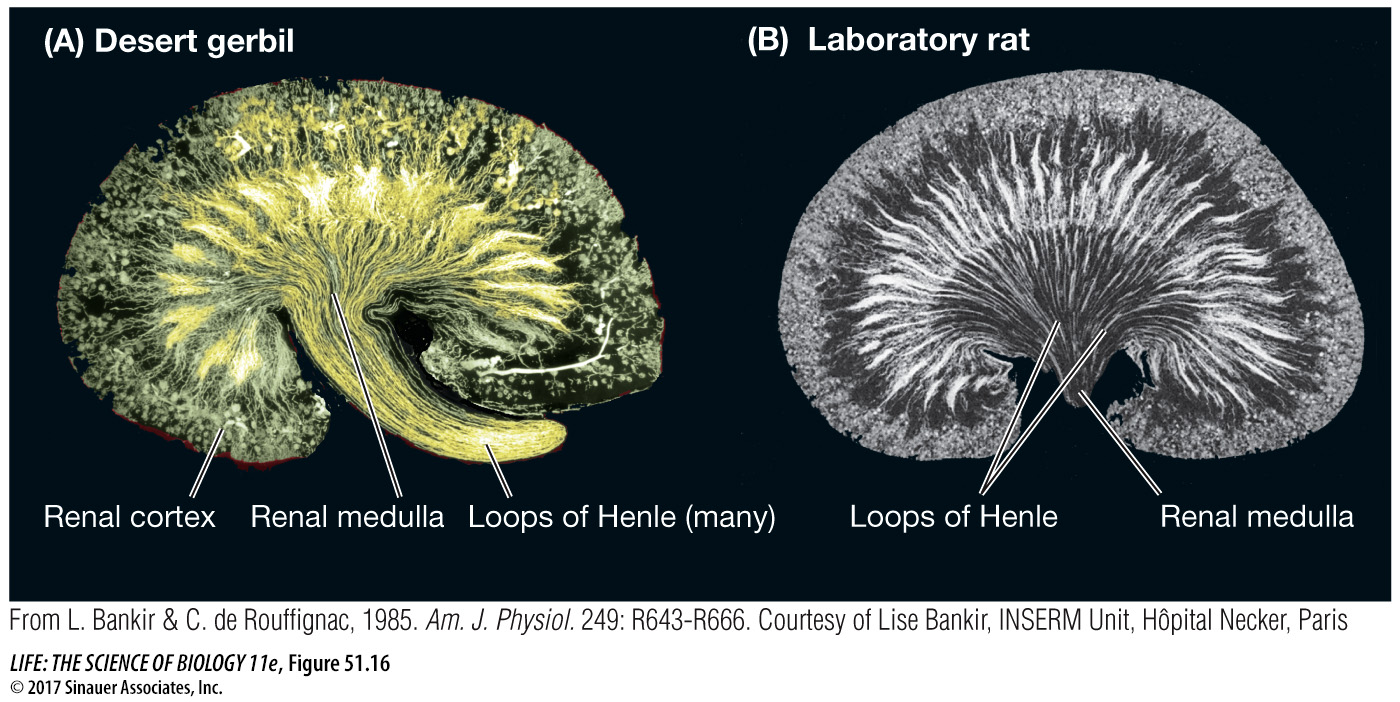Investigating Life
investigating life
How does the excretory system of vampire bats process their high-
As we described in the opening story, vampire bats conserve water by producing urine that can be as much as 15 times more concentrated than their blood. For comparison, the maximum urine concentration of humans is about four times that of the blood.
Recall from Key Concept 51.5 that the mammalian body’s ability to produce concentrated urine depends on the concentration gradient set up in the renal medulla by the loops of Henle. An important adaptation for increasing the concentration gradient is to increase the lengths of the loops of Henle relative to overall kidney size. Some tiny desert gerbils, for example, have such extremely long loops of Henle that the renal pyramid (each of the rodent kidneys has only one, in contrast to humans) extends far out of the concave surface of the kidney and into the ureter (Figure 51.16). The large concentration gradient that results draws most of the water out of the urine as it passes down the collecting duct. Desert gerbils are so effective in conserving water that they can survive on the water released by the metabolism of their food.

Q: Do you think the vampire bat has loops of Henle resembling those of the laboratory rat or the desert gerbil?
The vampire bat has long loops of Henle like the desert gerbil.
The vampire bat kidney is also particularly good at concentrating urea. Within minutes after feeding, the urea concentration in its urine can increase by more than 500-
Future directions
Understanding the diverse mechanisms whereby physiological systems are controlled and regulated can contribute to the discovery and development of new pharmaceuticals. The renal system is an example. Many diseases involve problems with salt and water balance. A common problem is water retention. A large number of drugs have been developed that increase the excretion of water in urine, such as occurs naturally in vampire bats. These drugs are called diuretics, and since they act through different mechanisms, they have different effects on Na+, K+, and Ca2+ levels in the blood, which can cause serious side effects. Excessive loss of K+, for example, can lead to heart arrhythmia, muscle weakness, and paralysis. Excessive retention of K+ can also lead to heart arrhythmia, along with muscle cramps and paralysis. Loss of too much Na+ can result in central nervous system deficits. Too much Ca2+ has many negative side effects, ranging from depression and fatigue to vomiting and gout. Thus it is important to understand how drugs work on physiological systems, to avoid negative side effects.